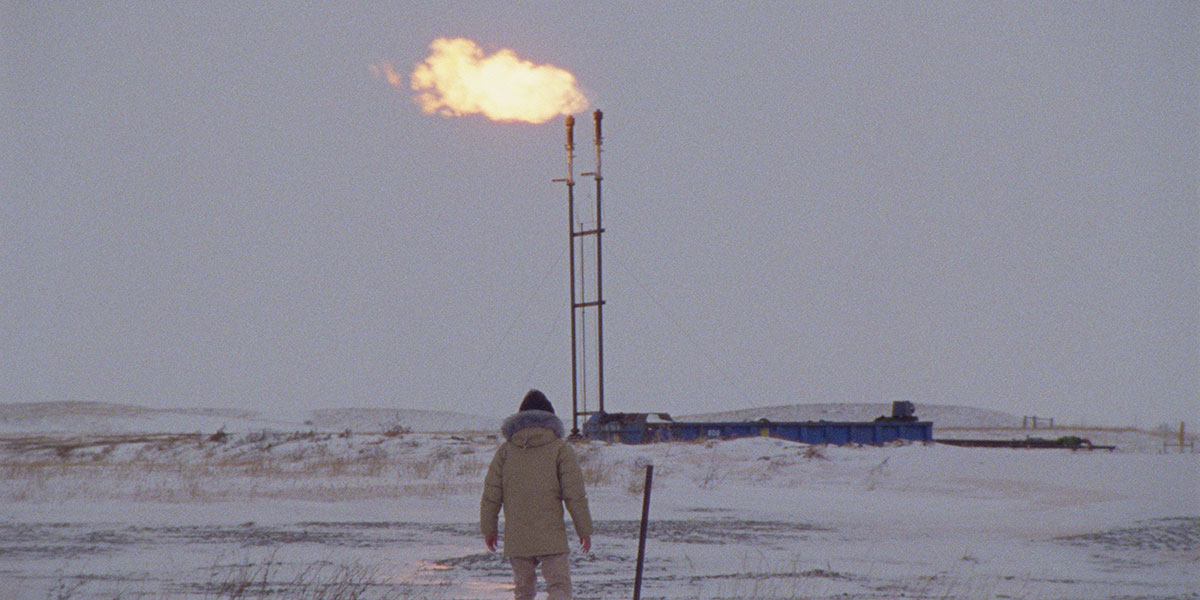Some dispatches shape themselves around genre or theme. Some are just random assemblies of orphans that couldn’t find their way into pieces with similar film siblings. This is the latter.
Daniel Goldhaber’s kinetic, riveting “How to Blow Up a Pipeline” was like nothing else I saw at TIFF. It has a gritty texture to it that’s unusual in a festival typically dominated by over-polished, big studio fare. Goldhaber revealed in his introduction that his parents were in the audience, noting how they have fought against the climate crisis for years, and one can feel that personal passion in the “Cam” director’s film. This is a movie that is tired of talk; the time for action is yesterday. And I think Neon was very smart to pick it up out of TIFF—it’s a movie that’s going to have a lot of young fans, people inspired by its intensity and ability to take a relatively dry concept like climate change and use it to fuel a heist thriller.
Very loosely based on the non-fiction book by Andreas Malm, “Pipeline” cuts back and forth between a group of climate activists sabotaging a Texas pipeline and flashbacks as to how this unusual crew assembled in the desert. It’s very much an ensemble piece but if there’s a lead it would be Xochitl (Ariela Barer), a climate change activist who has been radicalized after her mother died due to a recent heat wave. Everyone in “Pipeline” has reached a point of violent action—although, it should be noted, they’re careful to make sure no lives are lost, only corporate profits—due to a personal setback that could be traced back to inaction in the climate crisis. For example, Theo (Sasha Lane) has leukemia that likely wouldn’t exist without her proximity to a nearby plant, and Dwayne (Jake Weary) has literally battled pipeline installation on his Texan property. Goldhaber makes the political personal here, which gives the action emotional stakes instead of just global ones.
Goldhaber again works with his “Cam” editor Daniel Garber, who does some of the best editing work I’ve seen all year with this project. There’s a propulsion to “Pipeline” that could have been derailed by its flashback structure, but Garber and Goldhaber somehow find a way to never let that happen, turning each flashback into something of a short film, character portraits in the middle of the heist that don’t detract from it but enhance the tension. I generally find films that rely on flashbacks to have momentum problems, but that somehow never happens here because of how expertly assembled it all is.
“How to Blow Up a Pipeline” kind of writes itself into a corner—we don’t want the kids to fail but it’s also not too naïve a film to suggest that one act could end climate change so a victory might seem simplistic. I’m not fully convinced it finds its way out of it, but that’s a minor complaint for a film I suspect that young people will embrace. I keep telling my kids that theirs is the generation that’s really going to drive the climate change conversation—I like that this angry film will influence that discussion.

Speaking of anger, Jalmari Helander’s “Sisu” has a bunch of it. With very little dialogue, the director of “Rare Exports: A Christmas Tale” tells the very simple story of a brutal killing machine taking down some Nazis in the hazy days following the end of World War II. A version of the title basically means “Immortal,” and the protagonist here is that kind of Mad Max maniac, a former soldier tired of all the bullshit and just wants to go home. “Sisu” gets a bit repetitive and arguably lacks much to offer beyond its gore, but it works on its own B-movie terms. Who doesn’t want to watch Nazis go boom?
Helander’s regular collaborator Jorma Tommila plays a lone survivor on a desolate landscape in Northern Finland when he finds a gold deposit that could change his life forever. He packs up the gold and heads for the hills, but a convoy of fleeing Third Reich officers and soldiers happens upon him on his journey. Led by a vicious SS officer played by Aksel Hennie, these bad guys want the gold for themselves and don’t think much of tussling with an old prospector to get it. Of course, they discover that this is no ordinary wanderer as he outthinks and outlasts them in every way, often bouncing up after violence that would kill most ordinary men.
Helander doesn’t set out to rewrite the rulebook with “Sisu” and it’s refreshing to see a movie with comic-book level violence done with his degree of craftsmanship. “Sisu” is arguably pretty hollow, but that lack of pretension sometimes works in its favor. It’s a robust, old-fashioned action movie with one good guy who takes down dozens of bad dudes who underestimate him. Helander doesn’t have time for character detail or thematic depth—he’s too busy killing Nazis.

Finally, there’s the dismal “Blueback,” a weepy melodrama with performers I have loved in other films left totally adrift by director Robert Connolly, who was much more effective with last year’s strong “The Dry.” It’s hard to think of one thing that works about “Blueback” beyond maybe the natural beauty of its setting. Against that gorgeous backdrop, Connolly sets a coming-of-age tale that’s downright silly, never finding a tone that does anything beyond manipulation.
The always-good Mia Wasikowska stars as Abby, a marine biologist who gets a call after her mother has a stroke—in one of many queasy turns, the script basically sets up mom as a ticking clock, implying that there’s nothing they can do about another stroke coming any day now and ending her life. Abby rushes home, and the film jumps back in time to basically be a coming-of-age tale—regretfully losing its best performer for long stretches in Wasikowska—as it details the formative years of young Abby (Ilsa Fogg) and her mother Dora (Radha Mitchell). Dora was a vocal activist, trying to keep her corner of the world from being destroyed by the imposing corporate entities seeking to strip it of its resources. She taught Abby how to value preservation.
A mother-daughter weeper is one thing but “Blueback” doesn’t even focus enough on that angle. We don’t ever come to know Abby or Dora, and their relationship is undefined beyond the emotional buttons it pushes. And then there’s the title character, a groper fish that Abby befriends in a bay and visits to play with every now and then. It simply never looks like Blueback and Abby are sharing the same space, which means that this is a film about a girl and her CGI marine BFF. Eric Bana looks on from the fringe as an eccentric fisherman, and I kept wanting the movie to go off with his character and find more interesting waters over the horizon. These ones are murky at best.












